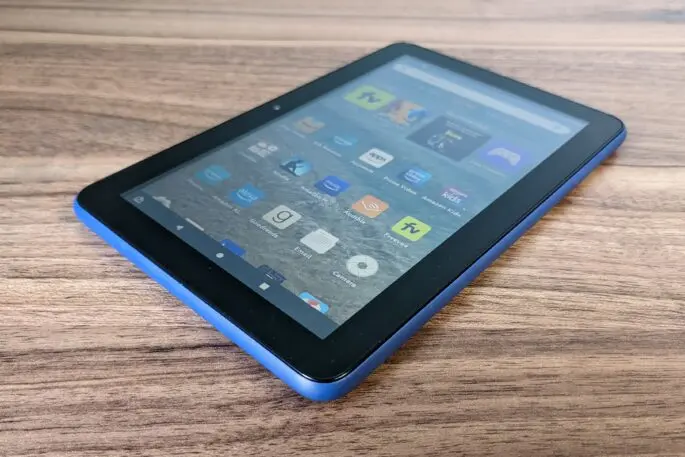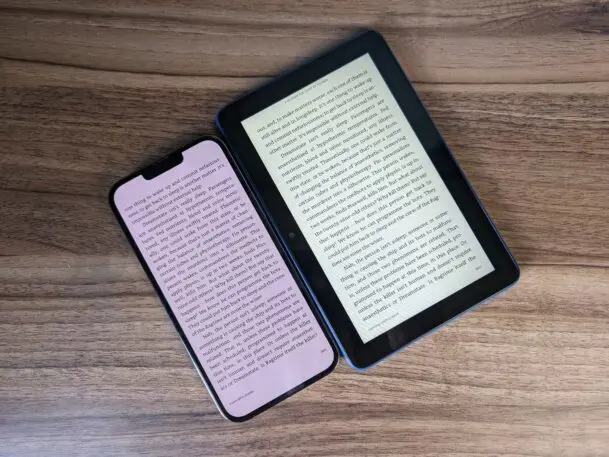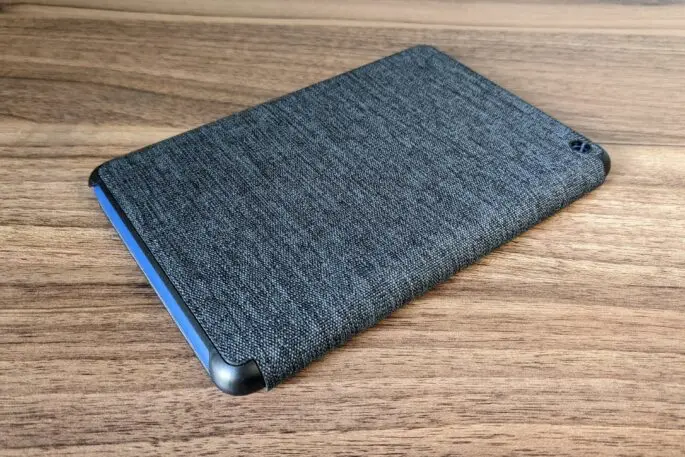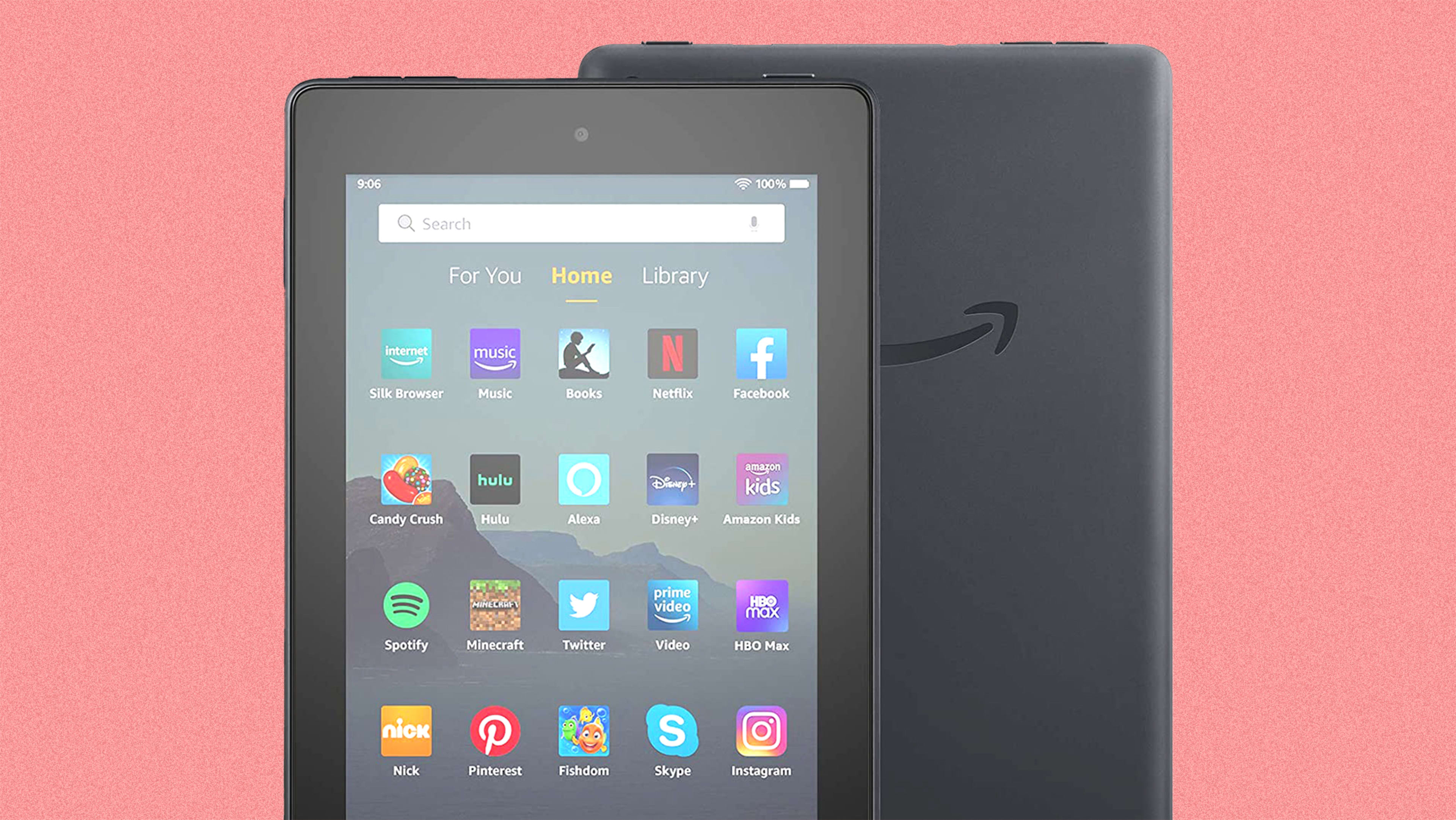In 2022, Amazon’s Fire 7 feels like a tablet from a bygone era.
7-inch tablets made a lot of sense back when our phones were smaller and less sophisticated. Reading books or playing games wasn’t as much fun on a 4- or 5-inch screen, and Amazon’s smallest Fire tablet was a cheap way to enjoy that same entertainment on a larger surface.
These days, however, your phone probably has a much faster processor, a higher-quality display, and better cameras than any of Amazon’s tablets. And compared to the 7-inch model in particular, the screen size may not be that much different. (Also: Your phone almost certainly doesn’t charge extra to remove ads from the lock screen, like Amazon’s tablets do.)
All of which raises the question of who exactly needs the $60 Fire 7, which Amazon has just updated for the first time in three years. While I’ve always had a soft spot for small tablets, we’ve reached the point at which a seven-inch slate is especially tough to justify alongside the phone that’s already in your pocket.

Sizing up Amazon’s tiniest tablet
Compared to the previous Fire 7 tablet from 2019, the 2022 version has twice the RAM (2 GB), a faster processor (by 30%, according to Amazon), and longer battery life of up to 10 hours. It also has a USB-C port instead of Micro USB, so you can charge it with the same cable you might already use for a laptop or an Android phone.
As a result, the Fire 7 is no longer as frustrating to use as its predecessors, though it can still feel pokey at times. It stutters when scrolling through long menus, and sometimes seizes up when switching between tasks. It still has a not-quite-HD 1024-by-600 resolution display as well, giving fonts and images a pixelated appearance.
All this is to be expected for a tablet that costs $60 and will likely cost less during sale events such as Black Friday and Prime Day. But for the Fire 7 to be worth anything at all, it needs to offer at least some utility over a modern smartphone, and so far I’ve struggled to find it.

Phone vs. tablet
Granted, my regular phone is an iPhone 13 Pro Max, which is on the larger side for a smartphone, yet I was still surprised by how close in screen size it is to the Fire 7. Side-by-side, the two devices are practically equal in display height, while the Fire 7’s screen is a mere 0.6 inches wider. The Fire 7 only seems a lot bigger because of the thick display bezels around the screen.
In practice, that means all the things I might conceivably want to do with the Fire 7 are better accomplished with my phone instead. To wit:
Books: Even with similar font sizes and the most compact spacing option, the Fire 7 only fits about one extra line of text on the page. Still, it’s less enjoyable to read on overall due to its blocky text and the quality of the screen, which picks up more glare at off angles.
Social media: Posts and images on Twitter are slightly larger and wider on the Fire, but scrolling through my feed was significantly jumpier and choppier, and tapping on links would sometimes produce a delayed screen response.
Amazon’s tablet lineup would be stronger without the Fire 7 in it.
Games: The 7-inch screen is a decent size for mobile games, and the bezels around the screen provide a comfy resting place for your hands, but performance can be a problem. In Crossy Road, for instance, the graphics looked fuzzy and were limited to 30 frames per second. (Meanwhile, the mid-range Pixel 4A 5G phone that I use on occasion handled the same game flawlessly.)
On top of all this, the app selection in Amazon’s AppStore is limited, both compared to Apple’s iPads and to Android tablets that include the Google Play Store. That’s not a major problem if you’re using the tablet primarily for books, videos, and music—Amazon has those bases mostly covered—but the mobile game selection is lacking, and many productivity apps are missing as well. (The good news is that you can add the Google Play Store with a little extra effort.)
All this brings me to the conclusion that Amazon’s tablet lineup would be stronger without the Fire 7 in it. Amazon says its smallest tablet is also its most popular, but I’d wager that has more to do with the price than with the experience of using it. Even a slightly larger screen—like the one on Amazon’s Fire HD 8—would be better for reading, gaming, and movies, while still being more comfortable to hold than Amazon’s 10-inch tablet or a full-sized iPad.

What about kids?
Of course, I may not be the target market for the Fire 7 to begin with.
Amazon’s Fire tablets have long been popular as iPad alternatives for kids, as they’re considerably cheaper and come with a bunch of kid-friendly features, such as a kids profile mode that locks out certain apps and features. Amazon even sells a Kids+ subscription for apps, games, and books, and it sells a $110 hardware bundle that includes a hefty carrying case, a year of Kids+, and a two-year damage insurance plan.
But as a parent of two, I can attest that kids like larger screens as well. That’s why, when I was looking for a new tablet for my daughter last month, I wound up buying a Fire HD 10 (and promptly loading the Google Play Store on it). The lack of complaints I’ve received since then suggests that opting for a bigger screen was the right call.
As our phones get ever bigger, that may be true for grown-up tablet users as well.
Sign up for Jared’s Advisorator newsletter for more practical tech advice every week.
Recognize your brand’s excellence by applying to this year’s Brands That Matter Awards before the early-rate deadline, May 3.
